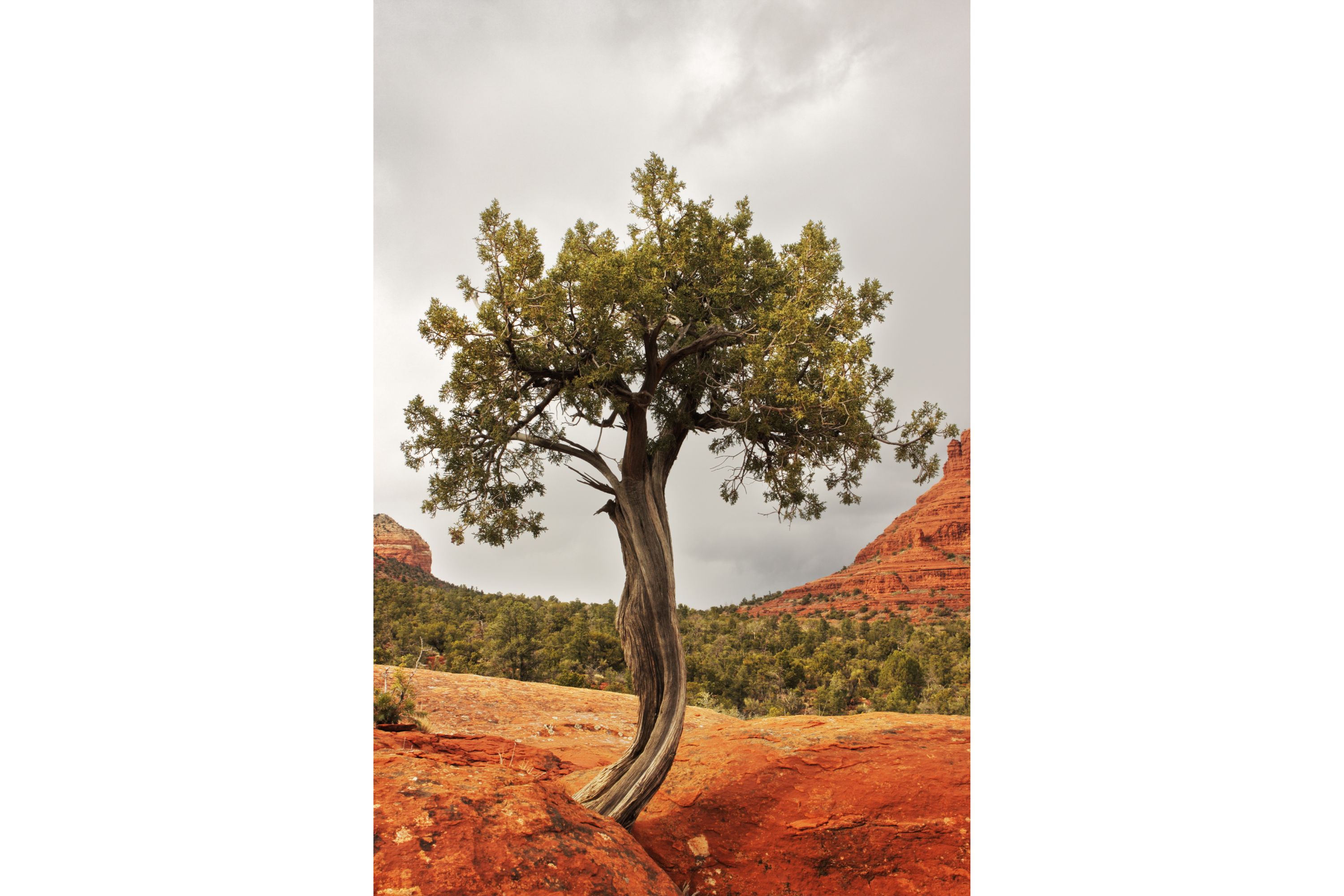Utah juniper
(Juniperus osteosperma)

Description
Juniperus osteosperma is a shrub or small tree native to the southwestern United States. The plant reaches 3–6 meters (9 ft 10 in – 19 ft 8 in), rarely to 9 m, tall. The shoots are fairly thick compared to most junipers, 1.5–2 millimetres (1⁄16–3⁄32 in) in diameter. The leaves are arranged in opposite decussate pairs or whorls of three; the adult leaves are scale-like, 1–2 mm long (to 5 mm on lead shoots) and 1–1.5 mm broad. The juvenile leaves (on young seedlings only) are needle-like, 5–10 mm (3⁄16–13⁄32 in) long. The cones are berry-like, 8–13 mm (5⁄16–1⁄2 in) in diameter, blue-brown with a whitish waxy bloom, and contain a single seed (rarely two); they mature in about 18 months and are eaten by birds and small mammals. The male cones are 2–4 mm long, and shed their pollen in early spring. It is largely dioecious with both sexes on the same plant, but around 10% of plants are monoecious, producing cones of only one sex. The plants frequently bear numerous galls caused by the juniper tip midge Oligotrophus betheli (Bibionomorpha: Cecidomyiidae); these are conspicuous pale violet-purple, produced in clusters of 5–20 together, each gall 1–2 centimetres (3⁄8–3⁄4 in) in diameter, with dense modified spreading scale-leaves 6–10 mm (1⁄4–3⁄8 in) long and 2–3 mm broad at the base. The species is native to the southwestern United States, in Utah, Nevada, Arizona, western New Mexico, western Colorado, Wyoming, southern Montana, southern Idaho and eastern California. It grows at moderate altitudes of 1,300–2,600 m (4,300–8,500 ft), on dry soils, often together with Pinus monophylla. Junipers are coniferous trees and shrubs in the genus Juniperus of the cypress family Cupressaceae. Depending on taxonomic viewpoint, between 50 and 67 species of junipers are widely distributed throughout the Northern Hemisphere, from the Arctic, south to tropical Africa, throughout parts of western, central and southern Asia, east to eastern Tibet in the Old World, and in the mountains of Central America. The highest-known juniper forest occurs at an altitude of 4,900 metres (16,100 ft) in southeastern Tibet and the northern Himalayas, creating one of the highest tree lines on earth. Junipers vary in size and shape from tall trees, 20–40 metres (66–131 ft) tall, to columnar or low-spreading shrubs with long, trailing branches. They are evergreen with needle-like and/or scale-like leaves. They can be either monoecious or dioecious.
Taxonomic tree:







